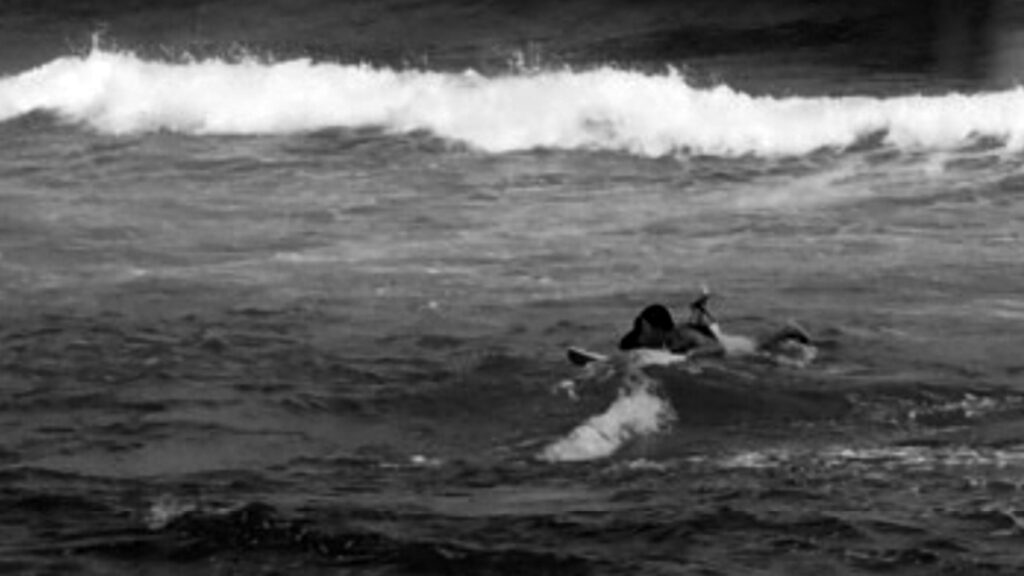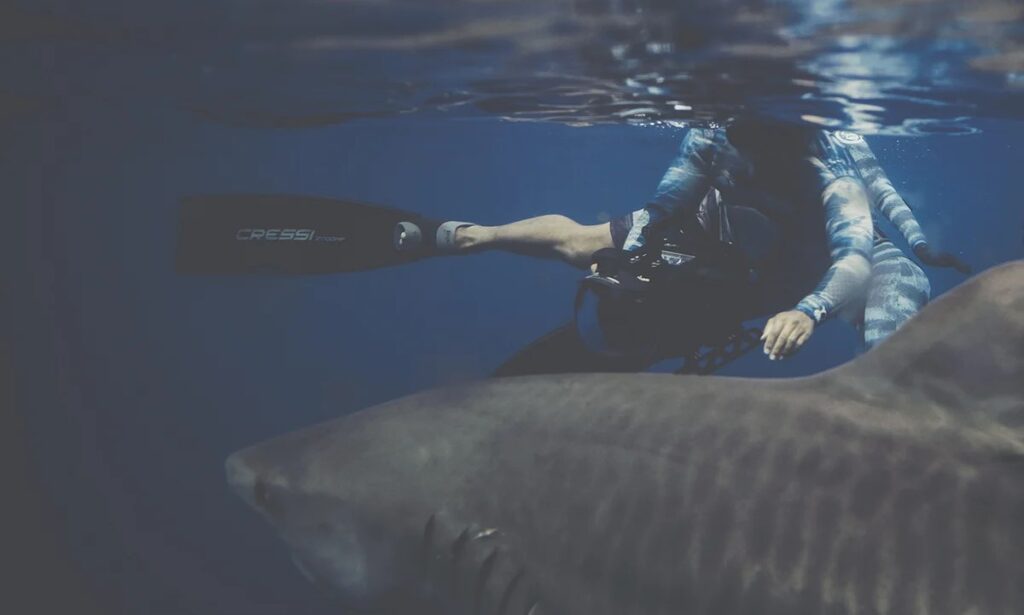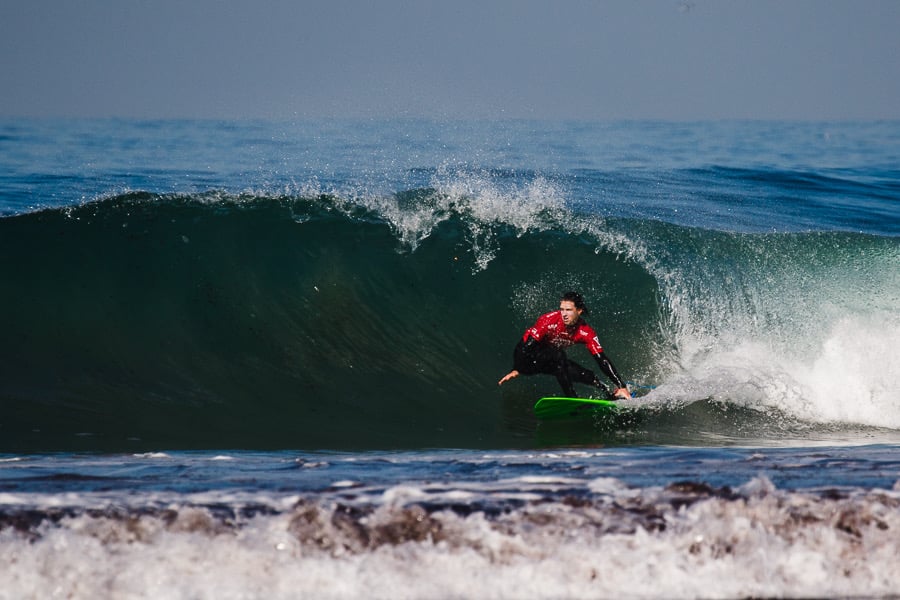
Colin W. Cook, 25, was surfing in waters off of Haleiwa, Hawaii, on Oct. 9, 2015. As described in an article by MidWeek, Cook had moved to O’ahu four years prior and lived on the North Shore, surfing daily just outside of Haleiwa and exploring all aspects of the sport including surfboard-building. Growing up in Rhode Island, Cook was consumed with sports, specifically skateboarding, snowboarding, and motocross.
On that October day, Cook “went across the street and checked the waves,” he later told a reporter. “It looked pretty fun so I went back, grabbed my board, and paddled out before work.”
After two hours in the water, straddling his shortboard, he waited for the next wave, bobbing in the water, about 600 feet from shore, with both of his legs dangling in the water with a 6-foot leash attached to his left ankle.
In an instant, Cook was violently pulled into the water by an 11-foot Tiger shark that bit his left leg. According to local news in Hawaii, the shark attack on Cook was the fifth recorded incident in Hawaii that year.
“I open my eyes and see this huge tiger shark latched onto my leg, dragging me. I immediately go into this fight or flight response, pushing the shark off with my left hand and punching it with my right.”
Cook punched the shark about the face and pushed against its nose and mouth to free himself. Its teeth caused deep lacerations to his hand and he even lost a few fingertips. The shark then bit through Cook’s leg, severing it about an inch above the knee.
Free from the shark’s jaws, Cook surfaced and climbed atop his board. But the leash attached to his leg was inside the shark’s mouth and as the shark swam, it towed the board with it.

Cook screamed, “Shark!” and alerted two nearby surfers who retreated toward shore.
Filmmaker Keoni Bowthorpe, 33, lived in Haleiwa and was on an 8-foot-long, standup paddle board in the water. From 500 feet away, he witnessed the attack, concluded immediately that it was a shark, and began to paddle toward Cook.
Although the two men did not go to the scene together that day, they were neighbors and casually acquainted with one another.
“So, I turned around and saw the shark hit him,” Bowthorpe said. “I saw it drag him down. Then he was calling for help, and I went straight back over.”
A 10-foot cloud of Cook’s blood surrounded him in the water. Cook’s leash eventually severed and Cook remained on his board, no longer being towed by the shark. As Bowthorpe approached, Cook shouted to him to throw the leash from Bowthorpe’s board. Without stopping, Bowthorpe threw the leash, intending to tow Cook to shore. Cook failed to catch the leash, and called to Bowthorpe, who turned around and returned to the scene, along with the shark. Seeing the shark – the largest he had ever encountered – he plunged his 6-foot paddle into the water and used it to push the shark away.

Seeing that Cook’s injured hand made it impossible for him to hold the leash, Bowthorpe stood on the paddle board for a few seconds to determine his next move. The shark returned, and Bowthorpe, again, used his paddle to push the shark away.
In a panic, Cook left his board, swam to Bowthorpe’s, and attempted to get on, knocking Bowthorpe into the bloodied water. Bowthorpe lost his paddle – his only defense against the shark – and quickly pulled Cook off his board, returned to his board, laying face-down and then pulled Cook on top of him. He retrieved his paddle.
“My stand-up board is pretty small,” said Bowthorpe. “Once I was able to get Colin on my back I gave the shark one more whack, let go of my paddle, and started to prone-paddle him in.”
The weight of the two men on the board caused it and part of Bowthorpe’s body to submerge. He paddled with his hands toward shore as Cook went in and out of consciousness while he managed to maintain a grasp of Bowthorpe.
An underwater reef and the strength of the currents prevented Bowthorpe from taking a direct course to shore. Paddling about 1,300 feet, Bowthorpe stated that at one point he felt the shark’s skin under his hand.
Cook’s roommate had observed the accident from a house just off the beach at the scene. He entered the water to help Bowthorpe and Cook when they were about 10 feet from shore. Bowthorpe and the roommate moved quickly to help Cook on the board where they dragged it farther up the beach. Another man tied a surfboard leash around Cook’s left thigh to serve as a tourniquet. They used the board as a stretcher where Bowthorpe and others carried Cook to a nearby highway to await paramedics. At this time, Cook was still going in and out of consciousness.
Medics arrived in about 15 minutes and took Cook to the hospital, where he was held for eight days to close the wound on his left leg, which had been severed above the knee. He required treatment for severe hand injuries, which included fingertip amputations.
Bowthorpe felt thankful after the rescue.
“I dropped to my knees, embraced my wife and three little babies, and never felt more gratitude,” he said.
Cook later talked about life following the attack, “It’s (a) day by day process definitely. The first few days, you know the four or five days were really hard and just day by day slowly and healing up, and trying to stay strong.”
While there was a long road ahead, Cook made vast improvements and returned to the water just three months after the attack.
“Every surfer knows that when you enter the ocean, that’s the shark’s home,” Cook told Hawaii public radio. “They’re out there, you just have to take that out of your mind.”
The support from the Hawaii community and other victims of shark-attacks, encouraged Cook and his family.
“The outpouring from the (Hawaii) community is like nothing I’ve been part of,” Cook’s father said. “The culture here, we’re so appreciative.”

According to an article in Honolulu Magazine, Cook continued to live his life to the fullest. Five years after the attack, Cook was back on the shore and settled into a new job as a prosthetics technician with Prosthetics & Orthotic Associates, a company that helped him with his custom carbon-fiber leg for surfing. He went on to win three Paralympic surf championship titles in the above-the-knee amputation category. He’s found love and moved past the incident.
For his actions and bravery in saving Cook, Bowthorpe was nominated for the Carnegie Medal by someone anonymous to him.
“I have no lifesaving experience – my experience is keeping myself alive when it gets big up here,” Bowthorpe said. “Instinct kind of takes over and your body does things without your permission, and that’s kind of what happened.”
Hawaii’s governor David Ige presented the medal to Bowthorpe in the state capital of Honolulu in November 2016. Bowthorpe was joined by his wife, Ashley, and their three children.
In the months and years that followed, the two men managed to keep in touch with one another.
“The experience we shared of fighting off a shark together—that bonds us in a way that is difficult to explain,” Bowthorpe said. “Friends, absolutely. Brothers is probably appropriate in a way. We keep in touch and our families keep in touch.”
At the time of the attack, Bowthorpe was in the process of making a film with a working title called Saving Jaws, which details the practice of shark-finning which kills around 100 million sharks a year and threatens an entire genus. He went on to finish the film, which was recognized by the Cannes International Independent Film Festival for cinematography.
–Griffin Erdely, Communications Assistant

